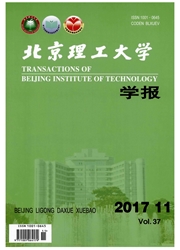

 中文摘要:
中文摘要:
为建立一种可以准确高效预测通气超空化流动的湍流模型,结合数值计算和实验结果,对绕锥头回转体通气超空化流动特性进行研究.实验采用高速录像观察了通气空化随时间的流场变化;数值计算中,分别应用标准k-ε湍流模型和密度分域的湍流模型计算了绕锥头回转体通气空化流动.其中,密度分域的湍流模型是在实验观测的基础上建立,即在空泡的前端含气量较大的区域应用DCM模型,以体现附着型空穴的可压缩性;在空泡尾部含气量较大的雾状空泡区域应用FBM湍流模型,以捕捉多尺度的空泡涡团结构.研究结果表明:与标准k-ε湍流模型相比,基于密度分域的湍流模型计算的结果与实验观测的现象基本吻合,有效减小了通气空化空泡区域内的湍流黏性,可以捕捉空泡区域内多尺度旋涡结构的演化过程,进而可以准确地预测通气超空化空泡断裂脱落的非定常流动细节.
 英文摘要:
英文摘要:
To build a turbulence model which can accurately and effectively simulate unsteady ventilated supercavity,the characteristics of ventilated supercavity flows around a axisymmetric body were studied based on both of experimental and numerical methods.A high speed camera was used to visualize the flow structures.A standard k-εturbulence model and a modified density based turbulence model were used to simulate ventilated supercavity.The modified density based turbulence model was built based on the experimental phenomenon.In the experiment,a DCM turbulence model was applied to reflect compressibility of the attaching cavity in the front of ventilated cavity where more gas contained.And a FBM turbulence model was applied to catch multi-vortex in the rear of ventilated cavity where more fogging gas existed.The results show that compared with k-εturbulence model,the modified density based turbulence model can get better results consisting with experimental results.So the modified density based turbulence model can easily catch the evolution process of complex vortex structures in the ventilated cavity because of reducing turbulence viscosity in the domain of ventilated cavity.
 同期刊论文项目
同期刊论文项目
 同项目期刊论文
同项目期刊论文
 期刊信息
期刊信息
